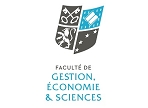Présentation
Provide to students’ basic macroeconomic tools, that help to understand the economy functioning as a whole and the way key factors determine the decision taking of policy makers.
Session 1: The Wealth of Nations: Defining and Measuring Macroeconomic Aggregates and Aggregate Incomes
Key Ideas:
I. The Wealth of Nations: Defining and Measuring Macroeconomic Aggregates
Macroeconomics is the study of aggregate economic activity.
National income accounting is a framework for calculating gross domestic product (GDP), which is a measure of aggregate economic output.
GDP can be measured in three different ways, and in principle these three methods should all yield the same answer: Production = Expenditure = Income.
GDP has limitations as a measure of economic activity and as a measure of economic well-being.
Economists use price indexes to measure the rate of inflation and to distinguish nominal GDP from real GDP (which holds prices fixed).
II. Aggregates Income
There are very large differences across countries in income or GDP per capita.
We can compare income differences across countries using GDP per capita at current exchange rates or adjusted for purchasing power parity differences.
The aggregate production function links a country’s GDP to its capital stock, its total efficiency units of labor, and its technology.
Cross-country differences in GDP per capita partly result from differences in physical capital per worker and the human capital of workers, but differences in technology and the efficiency of production are even more important.
Session 2: Economic Growth and Employment and Unemployment
Key Ideas:
I. Economic Growth
Economic growth measures how much (real) GDP per capita grows over time.
Today’s high levels of GDP per capita in many nations are a result of rapid economic growth over the last two centuries.
Sustained economic growth relies on technological progress.
There are sizable differences in the historical growth rates of different economies, which are largely responsible for their differences in the levels of GDP per capita.
Economic growth is a powerful tool for poverty reduction.
II. Employment and Unemployment
Potential workers fall into three categories: employed, unemployed, and not in the labor force.
The level of employment and the level of wages are determined by firms’ labor demand, workers’ labor supply, and various wage rigidities.
Frictional unemployment arises because it takes time for an unemployed worker to learn about the condition of the labor market and find a new job.
Structural unemployment arises because wage rigidities prevent the quantity of labor demanded from matching the quantity of labor supplied.
Cyclical unemployment is the difference between the unemployment rate and its long-term average.
Session 3 : Credit Markets and The Monetary System
Key Ideas:
I. Credit Markets
The credit market matches borrowers (the source of credit demand) and savers (the source of credit supply).
The credit market equilibrium determines the real interest rate.
Banks and other financial intermediaries have three key functions: identifying profitable lending opportunities; using short-run deposits to make long-run investments; and managing the amount and distribution of risk.
Banks become insolvent when the value of their liabilities exceeds the value of their assets.
II. The Monetary System
Money has thre
Modalités
Inverted classes, personal works and tutorials sessions in practice. Assessment will take place during each lecture.
Ressources
Macroeconomics, Second Edition. Daron Acemoglu, David Laibson and John A. List Copyright © 2018.






